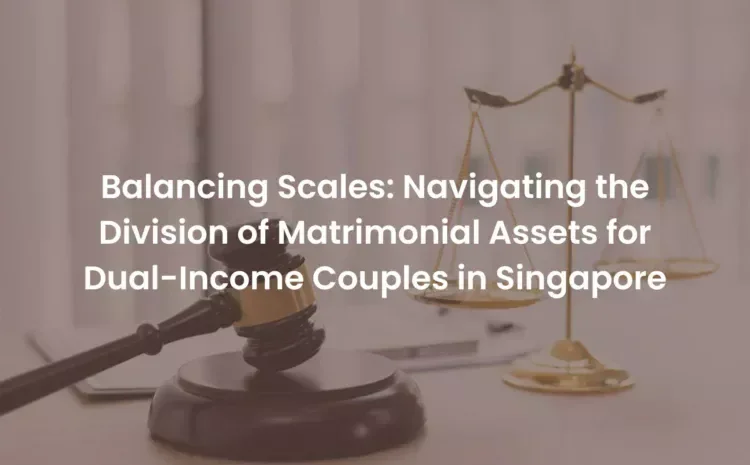Balancing Scales: Navigating the Division of Matrimonial Assets for Dual-Income Couples in Singapore
Introduction: Divorce is a complex process that requires careful consideration, particularly when it comes to dividing matrimonial assets. For dual-income couples in Singapore, the dynamics of asset division may differ, presenting both challenges and opportunities. In this blog post, we delve into the intricacies of the division of matrimonial assets for couples where both partners contribute to the household income.
Understanding Matrimonial Assets: In Singapore, matrimonial assets encompass all property acquired by either or both spouses during the course of their marriage. This includes real estate, investments, savings, businesses, and personal possessions. The division of these assets aims for a fair and equitable outcome.
Equal Contributions, Equal Rights: In the case of dual-income couples, where both partners contribute financially to the marriage, the principle of equality is often emphasized. The court considers the financial contributions of each spouse, recognizing the joint effort in building the family’s wealth. The focus is on ensuring a just distribution that reflects the contributions made by both parties.
Direct and Indirect Contributions: The court assesses both direct and indirect financial contributions. Direct contributions refer to monetary input, such as salaries and investments, while indirect contributions include non-financial aspects like homemaking, caregiving, and supporting a partner’s career. Dual-income couples may find that both partners have made significant direct and indirect contributions, influencing the asset division.
Complex Assets and Investments: Dual-income couples often have a more intricate financial portfolio, which may include joint investments, properties, and shared accounts. When dividing such assets, the court takes into account the complexity of these financial arrangements, ensuring transparency and fairness in the distribution process.
Spousal Maintenance Considerations: In cases where there is a significant disparity in earning capacity between the spouses, the court may consider spousal maintenance. This is especially relevant if one partner has sacrificed career opportunities or earning potential for the benefit of the family. Spousal maintenance aims to provide financial support to the less financially independent spouse post-divorce.
Mediation and Collaboration: Given the complexities of asset division, dual-income couples are increasingly turning to mediation and collaborative methods to reach mutually acceptable agreements. These alternative dispute resolution approaches allow couples to negotiate and decide on the division of assets outside of the courtroom, fostering a more cooperative and less adversarial environment.
Consideration of Children’s Needs: For dual-income couples with children, the court places a strong emphasis on the well-being of the children during divorce proceedings. The needs and best interests of the children are critical factors influencing the division of assets, as the court seeks to provide for their financial stability and security.
Legal Guidance and Professional Advice: Seeking legal guidance from family lawyers specializing in divorce is crucial for dual-income couples navigating the division of matrimonial assets. Lawyers can provide insights into individual rights, legal entitlements, and potential outcomes, helping couples make informed decisions during this challenging period.
Conclusion: Divorce for dual-income couples in Singapore involves navigating the complexities of financial entanglements and shared assets. The legal system acknowledges the equal contributions of both spouses and strives for a fair distribution of matrimonial assets. Through open communication, mediation, and legal guidance, dual-income couples can work towards an equitable resolution that sets the foundation for a new chapter in their lives.

